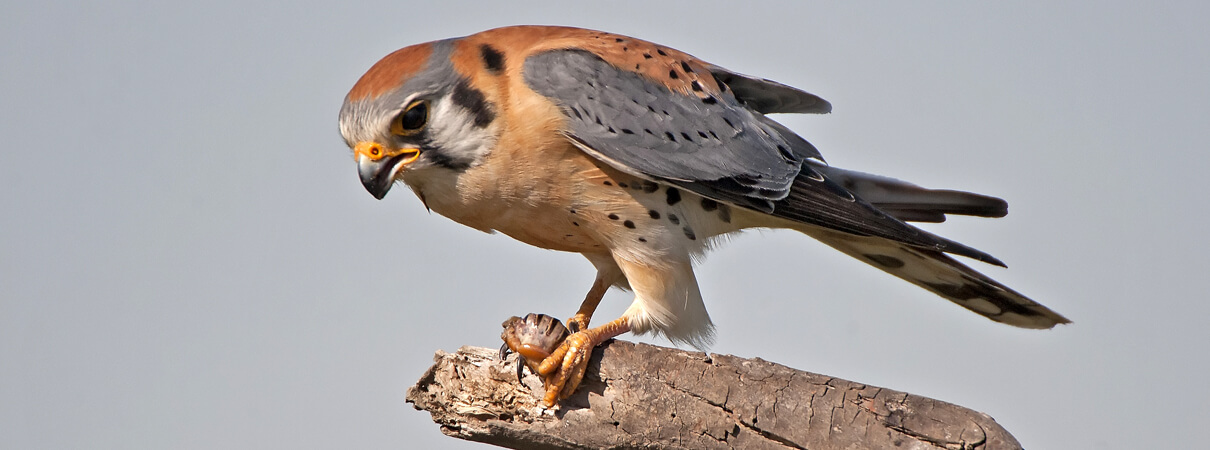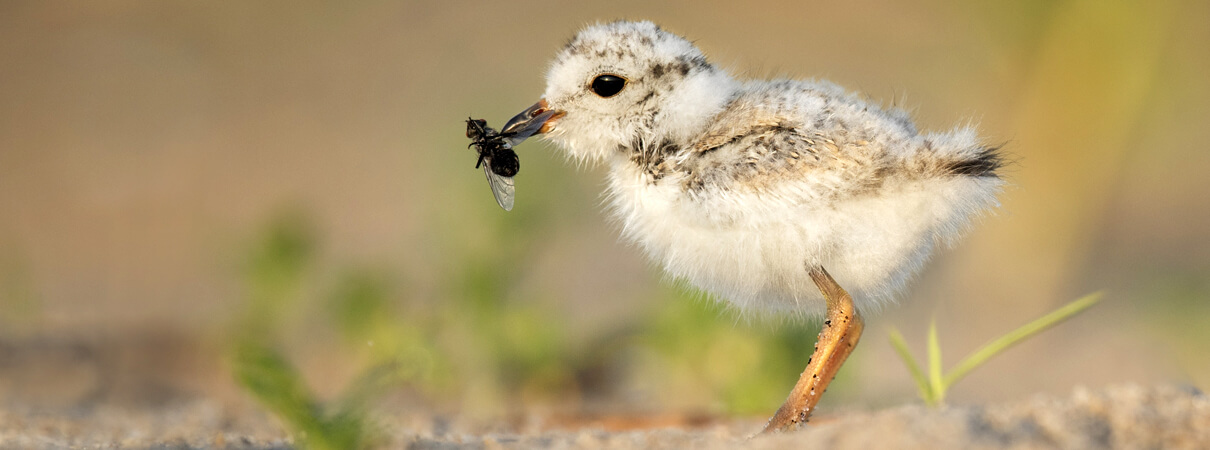Chlorpyrifos: Why It's Time to Ban This Dangerous Chemical
Editor's note: For 50 years the insecticide chlorpyrifos has been posing a threat to human health and wildlife, including birds. We asked Cynthia Palmer, ABC's Director of Pesticides Science and Regulation, to tell us more about chlorpyrifos and why it's time for a ban.
What is chlorpyrifos?
Chlorpyrifos is one of the most-used and most-lethal insecticides in the United States. It's been killing birds and poisoning American families for the past half-century. It is widely applied in the production of fruits, vegetables, nuts, and other conventionally grown crops, including many kid favorites like apples, peaches, grapes, and strawberries. Human exposure takes place when people consume contaminated food and drinking water, touch treated surfaces, or breathe the air near treated fields.

Insect-eating birds, including Eastern Meadowlark, are affected by chlorpyrifos, which also harms aquatic ecosystems. Photo by Paul Reeves/Shutterstock
We've heard that this pesticide is bad for kids. Why does a bird conservancy care?
Chlorpyrifos harms all living things. Rural residents, children, and farmworkers are in the greatest danger, along with birds and other wildlife.
Related to sarin nerve gas, the chemical sickens thousands of people each year. It can impair children's brains and affect IQ, memory, and mental and motor development. It has serious neurotoxic and endocrine effects in adults as well.
ABC is also very concerned about the documented threat chlorpyrifos poses to birds, especially to endangered species like the Florida subspecies of Grasshopper Sparrow and the Great Lakes' population of the Piping Plover, which are now hovering on the brink of extinction. A draft biological evaluation by the Environmental Protection Agency found that chlorpyrifos is “likely to adversely affect” 97 percent of all threatened and endangered wildlife, including more than 100 listed bird species.

Already hovering on the brink of extinction, the Florida subspecies of Grasshopper Sparrow is especially vulnerable to chlorpyrifos. Photo by Paul R. Reilho
Of particular danger to birds are the highly concentrated doses of chlorpyrifos found in seed treatments and granular applications (dried pellets applied to fields and gardens). These can be deadly to the birds that eat them, particularly to passerines such as pipits and sparrows. Beans, corn, cotton, cucumber, peas, pumpkin, wheat and other crops are grown from treated seeds. Likewise the granular applications of chlorpyrifos on tobacco, golf-course turf, ornamental plants, utilities, and vegetable crops are ingested by the birds as grit.
Chlorpyrifos can also decimate the food base for birds that eat fish and insects, because it is one of the most toxic pesticides for aquatic ecosystems.
Are there alternatives that farmers can use?
A range of pest-control products and practices can be used in place of chlorpyrifos. These include pest-resistant crop varieties, techniques to disrupt insect mating, a wide range of non-toxic traps (such as water traps and sweep nets), good field sanitation, crop rotation, high-pressure washing and steam sanitization, and less-toxic insecticides.
There is no singular pest control method that's one-size-fits-all. The choice of alternatives will depend on which pests are particular problems in the area, along with the climate, season, crop, and other variables. Many growers have already been transitioning away from chlorpyrifos in anticipation of a ban, and many have been organic for years, finding sustainable ways to raise healthy and abundant crops without chlorpyrifos or other dangerous chemicals.

Many species, including American Kestrel, will benefit from a ban on chlorpyrifos. Photo by Richard Fitzer/Shutterstock
If chlorpyrifos is so dangerous, why hasn't EPA banned it?
ABC and other public health and wildlife conservation groups have been calling for a ban on the use of chlorpyrifos for years. EPA scientists have agreed that there is no way to use the pesticide safely as required by the Food Quality Protection Act, and the EPA was on course to ban the pesticide in the spring of 2017.
But in March 2017, then-new EPA chief, Scott Pruitt, rejected the conclusion of his agency's own pesticide experts. Rebuffing a petition filed by environmental groups a decade ago, he granted a five-year extension on the registration of chlorpyrifos. (Editor's note: Legal battles have since ensued, and it's hard to say which way the fight will go.)

Young humans and birds like this Piping Plover chick are particularly vulnerable to the effects of chlorpyrifos. Photo by Ray Hennessy/Shutterstock
What can I do to help?
Whenever possible, buy organic produce. And speak out to your government representatives. Let them know how you feel about the issue. Don't know your representatives? Here's a guide to contacting elected officials.
(This post was updated on Feb. 28, 2019)


















































